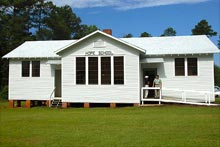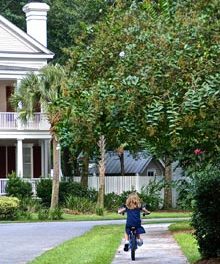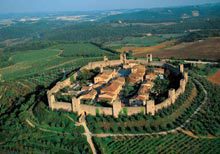 Prior to the 1950s, civic institutions were the icons of towns and cities throughout America. The City Hall, the Courthouse Square, the Fire Station, the Theater, Churches – many of these still exist as focal points of towns and cities around our state and are emblematic of their context and community. Drawings and etchings of them are found in city seals and logos. Their presence and frequent representation boldly declares, “This place is founded upon civic pride.”
Prior to the 1950s, civic institutions were the icons of towns and cities throughout America. The City Hall, the Courthouse Square, the Fire Station, the Theater, Churches – many of these still exist as focal points of towns and cities around our state and are emblematic of their context and community. Drawings and etchings of them are found in city seals and logos. Their presence and frequent representation boldly declares, “This place is founded upon civic pride.”
At one time in history, schools also embodied the civic pride of towns and cities. Look at how beautiful some of the old schools, built before the 1930s, all over the country are, and how they embrace the urban fabric that surrounds them. They were not placed out in the middle of nowhere, landlocked and isolated, devoid of community. They stood proudly in the heart of towns and neighborhoods and were upheld by the citizens as important civic institutions that not only contributed to their child’s education, but also to the town’s dynamic fabric.
The notion of the “school house” was common in more rural settings, and the importance of anchoring even the smallest of communities around schools was understood. Beginning in 1912, the Rosenwald School Building Program built thousands of small (typically one to five room) schools across the country and particularly in the South, for African-American communities. Along with the schools, houses and shops were built as well completing the key ingredients to a town: education, economy and housing.
Schools also have importance within the fabric of more urban areas. South Carolina has a particularly wonderful history of grand, in-town schools. Greenwood and Union both have monumental buildings on their Main Streets. Embedding these schools right into the most central areas of towns and cities outwardly acknowledges the importance the community places on education. It also allows these institutions of learning to be easily supported and embraced, and extends the opportunities for learning far beyond the walls of the school. Students are able to take field trips simply by walking down the street: to a community park to learn about biology, to the local museum to learn about history, to the city hall to learn about government, and to many other civic institutions around town. This connectivity to their learning makes for a much more didactic experience for students, contributing to both student and community identity in a way that being bussed 20 minutes each way just can’t. Furthermore, the neighborhood school building itself serves a variety of purposes for the community: as meeting space for civic groups, and a venue for community functions hosted by the school such as plays, art shows, science fairs and sporting events, becoming the entertainment and night-life for the area.
particularly wonderful history of grand, in-town schools. Greenwood and Union both have monumental buildings on their Main Streets. Embedding these schools right into the most central areas of towns and cities outwardly acknowledges the importance the community places on education. It also allows these institutions of learning to be easily supported and embraced, and extends the opportunities for learning far beyond the walls of the school. Students are able to take field trips simply by walking down the street: to a community park to learn about biology, to the local museum to learn about history, to the city hall to learn about government, and to many other civic institutions around town. This connectivity to their learning makes for a much more didactic experience for students, contributing to both student and community identity in a way that being bussed 20 minutes each way just can’t. Furthermore, the neighborhood school building itself serves a variety of purposes for the community: as meeting space for civic groups, and a venue for community functions hosted by the school such as plays, art shows, science fairs and sporting events, becoming the entertainment and night-life for the area.
Beginning in the 1940s and 50s, as people began to move away from cities, civic buildings followed. Highway-side churches, libraries, government complexes, fire and police stations are so common today that we barely give them notice. Likewise, schools are most often placed on large tracts of land, setback significantly from the road, accessible only by car or bus, and completely isolated from the community. Civic disinvestment is visible in the physical structure and situation of these buildings. Sure, the “cost per pupil” spent may be higher, and the facilities and technologies are more sophisticated, but can this meaningfully replace community support and interaction?
The CNU Carolinas Chapter does not think so. The Carolinas do not have many great examples of schools still embedded into cities, towns and neighborhoods. Many of the Rosenwald schools still remaining, as well as those other schools aforementioned, are no longer used as schools but rather as community centers or apartment housing. Though the ability for these buildings to adapt to different uses is a testament to their superb design and construction, the fact that they are no longer institutions of education is discouraging.
In Beaufort County, the neighborhood school is a rarity. Few schools in this area still embody the civic responsibility that once was essential to a functioning community. The closure of one of these rare schools is a significant hit to a town, its people and its history; it deflates the air out of a community. One of the most important aspects of keeping a neighborhood alive is its citizens’ civic pride. It is difficult to have civic pride without the actual civic institutions being a part of the neighborhood fabric.
This article was written for Lowcountry Weekly by the Congress for the New Urbanism – Carolinas Chapter. For more information, visit www.cnu.org







